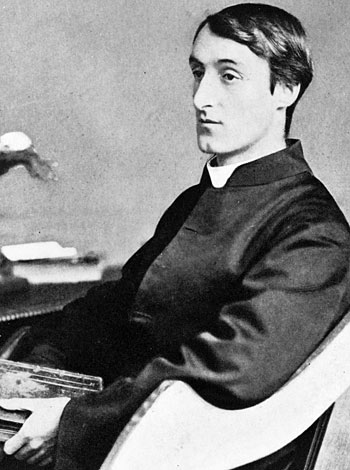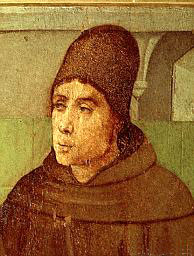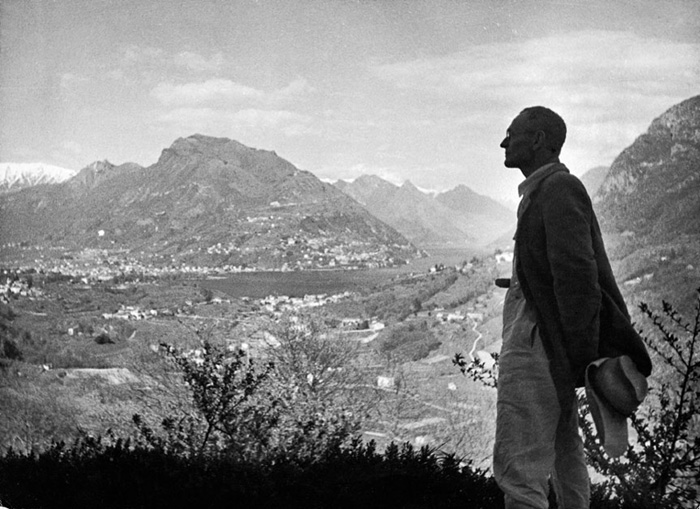 |
| Joyce (1882-1941) |
James Joyce wrote that a poet is "a priest of the imagination, transmuting the daily bread of experience into the radiant body of everlasting life" (A Portrait of the Artist as a Young Man).
I discovered this little gem in a footnote while reading Philip A. Ballinger's The Poem as Sacrament: The Theological Aesthetic of Gerard Manley Hopkins, which is fitting enough as Hopkins is perhaps the most notable example of someone being both a priest and a poet. Ballinger's work is beautiful in the way that it focuses on Hopkins sacramental poetic vision which is that a poem stresses the 'instress' of a thing or that a poem 're-presents' the 'inscape' of a thing.
 |
| Gerard Manley Hopkins (1844-1889) |
sacramenta continent quae significant
(sacraments contain what they signify)
The Eucharist brings us into communion with the Body of Christ because our communion and the Body of Christ are contained in the Sacrament: they are the sacrament. The sign causes our unity to Christ, because he is there. The intimacy between God and the signs he uses to express Himself are clearly identified from the beginning of John's Gospel where he states that "The Word was God" (1:1). This idea can allow Catholics to tip their hats to (the convert to Catholicism) Marshall McLuhan and agree that at least with God, "the medium is the message."
 |
| McLuhan (1911-1980) |
 |
| John Duns Scotus (1265-1308) |
 |
| Hesse savoring the inscape of a landscape. |
The relation between the instress and inscape is riddled throughout Hopkins' thought and while it can be perplexing (How can the inscape qua form of the landscape, be more than the hills, trees, rocks, etc. and yet also absolutely in each detail of the hill, tree, rock, etc.), but comprehending the inscape is not the matter of this essay, and actually any attempt to do so may actually comprise the integrity of the mystery.
The point of this present reflection is that the poet is the priest, who tries to convey this instress and inscape to his audience. The poem stresses, signifies and accomplishes the original instress and inscape, so that the reader might stand with the poet in contemplation of the same thing as the priest and laity commune with one another. It is this common sentiment, which underscores the Eucharist's ability to bring us back to the Last Supper, Calvary, the Manger, the Heavenly Liturgy, and wherever the Mass was, is, or will be celebrated.
The sacerdotal role of the poet is so prevelant in Hopkins, because Christ is behind everything in Hopkins' poetry, because he is behind every thing—as he wrote: "There lives the dearest freshness deep down things." Hopkins has such percipience into the unfathomably unique minutia of the natural world, because in it he sees the Christ in whom "all things hold together" (Col 1:17). Because Christ is the Word which orders everything that is, Ballinger artfully writes that for Hopkins "all things 'rhyme' because they are patterned by the Word" (145). Hopkins' is able to see a world "charged with the grandeur of God" and can see Christ truly play "in ten thousand places, lovely in limbs, and lovely in eyes not his."
 | |
| Balthasar (1905-1988) |
But just as the Eucharist is not mere bread but a sacrifice of love, so too the foundation of these houses is the sacrifical "lamb slain from the foundations of the world" (Rev 13:8). Balthasar writes, in his treatment of Hopkins, that coupled with this Eucharistic image, Christ's Cross "is the fundamental, ontological presupposition of all natural processes that all, knowingly or not, intrinsically signify or intend by pointing beyond themselves" (GL III, 394). As a priest, it is Christ's sacrifice that imbues Hopkins' vision of the world and Christ's sacrifice of love is the heart of the world. Hopkins' sensitivity to the most minute beauties of nature, which rendered him odd to his fellow Jesuits (who did not know about his secret and personal poetic life), was because he intuited that all the beauty in existence derived from the Lamb, whose sacrifice is gratuitously offered as a supper: "How soldiers platting thorns around CHRIST’S Head/ Grapes grew and drops of wine were shed."
"For what has to be interpreted is not concepts (of 'universal', abstract truths), but images (of the unique, personal, divine-human truth), and here poetry is the absolutely appropriate theological language, and Hopkins brings the great English tradition back into the Church by his own creative achievement" (Balthasar, GL III, p. 391, emphasis mine)Perhaps Balthasar's understanding of poetry as the absolutely appropriate theological language, stems from the essentially sacramental character of Catholic theology. The centrality of the Eucharist in Catholic theology is unquestionable; it is "the source and summit of the Christian life" (CCC §1324). Thus the liturgical celebration of the Eucharist is perhaps concentrically of the next importance, and Hopkins' sacramental poetics have a lot of potential insight. Though Hopkins' poetry might not meet all people where they are at, anyone can see that the creative use of language is captivating whether it be in music, poetry or even advertising, and obviously the language of prayer (whose form echoes stanzas of poems already) needs to be in dialogue with poetry.
But the relationship between liturgy and poetry is deeper than mere wording. Liturgy's etymology means the "work of the people" (λειτουργία) and the poetry's etymology comes from the verb "to do" or more specifically "to make" or "create" (ποιηω). Careful reflection and participation in the poetic life as we have seen exemplified in Hopkins (attentiveness to "instresses" and "inscapes," contemplation of beauty, openness to creatively and spontaneously responding to God) is absolutely what has the potential to rejuvenate the liturgical life of the Church, which is to say the life of the Church itself.
The lesson to be learned in this reflection of Hopkins, is that it is imperative that we move from praxis to poiesis, from mere or habitual 'doing' to creative collaboration with God in His own creative life. Realizing our "priesthood of all believers" may need to begin with recovering the poetry of believing. For if we neglect our poetic stewardship, we stop being co-workers or pro-creators with God and how is any species to survive without procreation? Hopkins' theo-poetic vision invites us to be struck by the instress of God that we might contemplate His inscape and offer our own pens, paper, voices, minds, hearts and ultimately lives to stressing and representing them with our our poems, our lives and our selves sacramentally.
References
Video Biography of Hopkins Part I
Biography of Hopkins
The Poetry Foundation's Podcast: Close reading of "The Windhover"
Introductory Poems
God's Grandeur
"As kingfishers catch fire"
Pied Beauty
The Windhover
Binsey Poplars (Watch his attention to nature's unified and individual beauty)
The Blessed Virgin Compared to the Air we Breathe (Mariology in Hopkins' sacramentality is another expansive issue)
May Magnificat
Wreck of the Deutschland (A Longer Poem)
It seems all of his English Poems and Fragments (No Latin, Greek or Welsh)

No comments:
Post a Comment